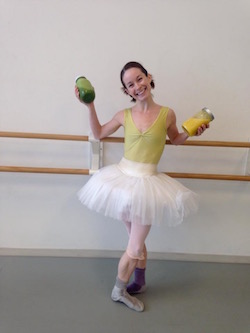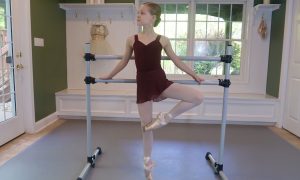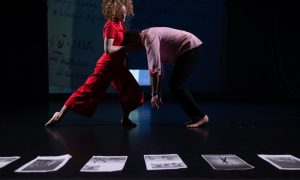At a recent Atlanta Ballet performance, I was amazed at the level of athleticism, endurance and power that today’s classical and contemporary choreography requires. One minute, dancers are barefoot flinging themselves into acrobatic contortions, and the next minute, they are doing partnered pirouettes in grande plié. All of this requires the right kinds of strategically-timed fuel for working muscles and the brain.
Zachary Hench, artistic director of Juneau Dance Theatre and veteran principal dancer, reminds us, “Dancers need such tremendous amounts of energy. We have to remember that we get out of our body what we put into it.” When you are a young dancer, it’s easy to fall into unhealthy eating habits due to busy lifestyles and the pressure to look a certain way. Once you have a few years of company life under your belt, you quickly realise the connection between smart food and beverage choices and performance. As a dietitian and former professional dancer myself, I recognise the need for dancers to have clear examples of what foods actually help (and taste good).
What better source of ideas than actual working dancers? This is the premise behind the new Nutrition for Great Performances Book and DVDs and the “Real Dancers Eat” campaign. Here are just a few of the best (and tastiest) ideas and recipes from real dancers.
#1. Get your greens by any means necessary.
Spinach, kale, chard and all leafy greens are still the undisputed powerhouses of nutrition and wellness. If they are too bland by themselves, dress them up. Troy Schumacher, dancer with New York City Ballet, director of BalletCollective and sought after choreographer, says, “I love a salad before dinner or as a snack, and I love salad dressing.”
Troy’s Basil Salad Dressing combines ½ cup white wine vinegar, ½ cup olive oil, ½ shallot (minced), 1 clove garlic, 1 Tbs Dijon mustard, 5 basil leaves (minced) and a pinch of salt. (This recipe makes plenty to keep in the refrigerator for about two weeks). Add tons of veggies and some pumpkin seeds to the salad to increase nutrients.
Elana Altman, a former soloist with San Francisco Ballet and now a food and farming expert, loves to cook her greens and serve with polenta. She chops 3-4 large cups (1 to 2 large bunches) of greens and sets aside. Then, in 2 Tbs olive oil, she sautés 1 medium onion or leek (chopped), 3 sliced cloves of garlic and folds the greens in as they cook. She adds 1 tbs apple cider vinegar and a pinch of salt to draw the moisture out of the greens, cooking for about 10-15 minutes until tender. Easy, quick and perfect with polenta, potatoes or whole grain pasta for extra energy.
#2. Hydration matters!
Why not make your hydration beverage count toward boosting energy and immune function, too?

Atlanta Ballet’s Alessa Rogers brings her homemade smoothies to the studio. Photo courtesy of Rogers.
Alessa Rogers is a leading dancer with the Atlanta Ballet and has been known to walk around the building with her mason jar of homemade smoothie goodness. “Many of the dancers at Atlanta Ballet drink this smoothie in glass mason jars so we can see the beautiful vibrant yellow color,” she says. Her Anti-Inflammatory Sunshine Smoothie blends up 1 cup orange juice, 1.5 frozen bananas, ½ yellow capsicum, ½ cup frozen pineapple, 1 inch slice fresh ginger, 1/8-1/4 tsp turmeric (or use slivers of fresh turmeric root). Rogers is right in that pineapple, ginger and turmeric all have science to back up the anti-inflammatory claims, and eating more plants and plant-based foods are known to contribute to decreased inflammation.
#3. Make your own snacks, and always bring them with you.
Oatbites, daterolls and chia seed pudding are all great choices to bring to the studio or theater. Tara Lee, veteran dancer with Atlanta Ballet and up-and-coming choreographer, relies on her Cacao Pow Drink for long days. “This is a super drink to sip on before a performance or intense rehearsal,” says Lee. Blend the following ingredients until smooth and creamy: 1.5 cups almond or soy milk, 2 Tbs raw cacao powder, ¼ cup goji berries, 1 tsp coconut oil (optional for very high energy days), 1 tsp honey to taste. Take in a thermos to keep the drink cold and food safe.
John Welker (Atlanta Ballet) eats oatmeal almost every morning, Gisele Bethea (American Ballet Theatre) makes lentil soup as nourishing post-exercise refuel, and Josh Reynolds (Royal Winnipeg Ballet) makes potato pancakes to bring to the theatre. Real dancers eat, and they make smart choices because their body is their instrument.
All of these recipes and more can be found in the Nutrition for Great Performances Resource Book at www.dancernutrition.com.
By Emily C. Harrison MS, RD, LD Nutrition for Great Performances.
Emily Harrison
 Emily Cook Harrison MS, RD, LD
Emily Cook Harrison MS, RD, LD
Emily is a registered dietitian and holds both a bachelor’s and master’s degree in nutrition from Georgia State University. Her master’s thesis research was on elite level ballet dancers and nutrition and she has experience providing nutrition services for weight management, sports nutrition, disordered eating, disease prevention, and food allergies. Emily was a professional dancer for eleven years with the Atlanta Ballet and several other companies. She is a dance educator and the mother of two young children. She now runs the Centre for Dance Nutrition and Healthy Lifestyles. She can be reached at emily@dancernutrition.com
www.dancernutrition.com















